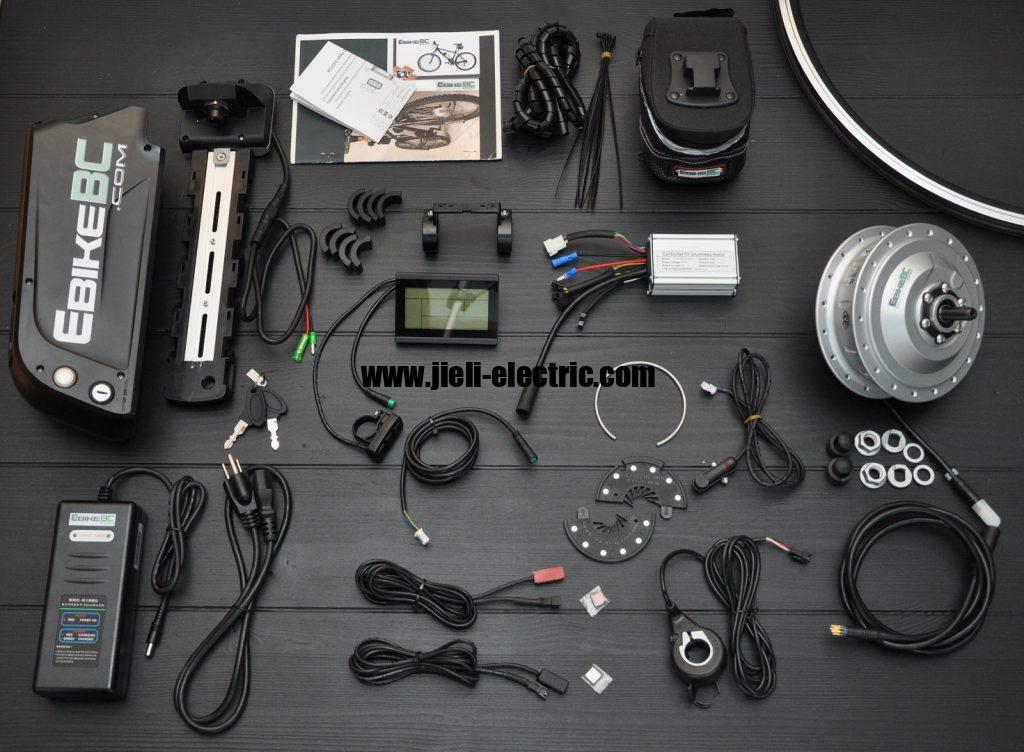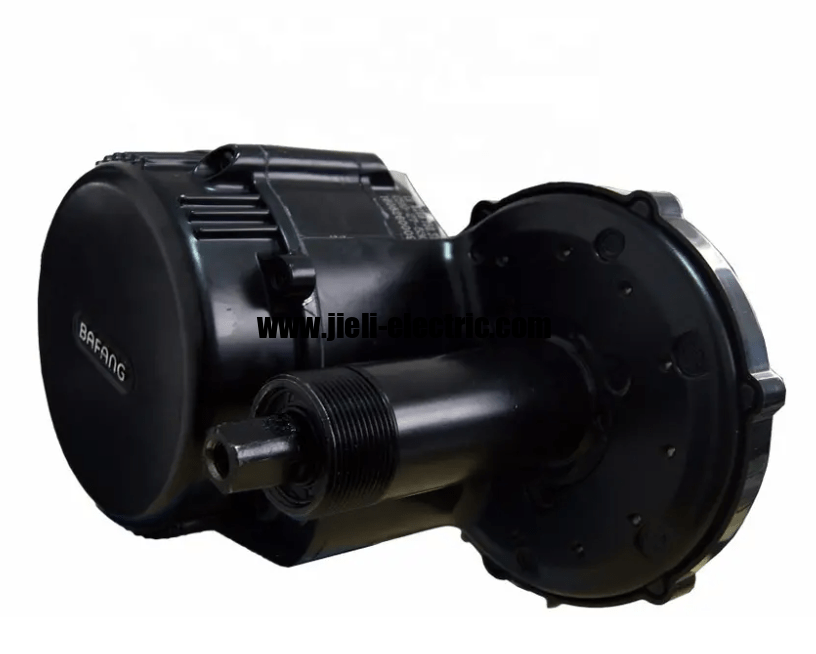Common e-bike voltage levels are 36V, 48V, and 52V. Voltage measures the electric potential difference between two points in a circuit. It is like the electric pressure pushing the current through the wires. The higher the voltage, the more power can be delivered to the motor. The purpose of this post is to compare these voltage levels and show you how they affect your e-bike performance in terms of power output, battery life, and motor efficiency.
Why Voltage Matters:
Power Output
Power output is the amount of work that can be done by the motor in a given time. It is measured in watts (W) and depends on voltage and current. The formula for power output is P = V x I, where P is power, V is voltage, and I is current. This means the higher the voltage, the higher the power output for the same current.
For example, if your e-bike has a 500W motor and a 36V battery, it can deliver a maximum power output of 500W = 36V x 13.9A. However, upgrading your battery to 48V can increase your power output to 500W = 48V x 10.4A. This means you can use less current to achieve the same power output, improving your battery life and motor efficiency. With a 52V battery, you can improve efficiency by 8% compared to 48V.
Power output affects your e-bike performance in several ways:
- It determines how fast you can accelerate and how steep you can climb. Higher power output means more torque and speed.
- It determines how much load you can carry on your e-bike. Higher power output means more capacity to haul cargo or passengers.
- It determines how much fun you can have on your e-bike.
Higher power output means more thrill and excitement.
Battery Life
Battery life is when your battery can provide power to your motor before it needs to be recharged. It is measured in watt-hours (Wh) and depends on voltage and capacity. The formula for battery life is Wh = V x Ah, where Wh is watt-hours, V is voltage, and Ah is ampere-hours (the measure of battery capacity). This means that the higher the voltage, the higher the battery life for the same capacity.
For example, if your e-bike has a 10Ah and 36V battery, it can provide a maximum battery life of 360Wh = 36V x 10Ah. However, upgrading your battery to 48V can increase your battery life to 480Wh = 48V x 10Ah. You can ride longer on a single charge with a higher-voltage battery.
Battery life affects your e-bike performance in several ways:
- It determines how far you can travel on your e-bike without worrying about running out of juice. Higher battery life means more range and autonomy.
- It determines how often you need to recharge your battery and how long it takes to do so. Higher battery life means less frequent and shorter charging times.
- It determines how long your battery will last before it needs to be replaced.
Higher battery life means a longer lifespan and lower maintenance costs.

Motor Efficiency
One of the reasons why voltage matters are because it affects the motor efficiency of your e-bike. Motor efficiency is the ratio of the mechanical power output to the electrical power input of the motor. In other words, it measures how well the motor converts electricity into motion.
The higher the voltage, the higher the motor efficiency. This is because higher voltage means lower current for the same power output. Lower current means less resistance and heat loss in the motor and the wires. Less heat loss means more energy is used for moving the e-bike rather than wasted as heat.
For example, a 250W motor running at 36V will draw about 7A of current, while the same motor running at 48V will draw only 5.2A of current. The power output is the same, but the current is 26% less. This means that the motor running at 48V will have less resistance and heat loss than the one running at 36V and, therefore, higher efficiency.
Higher motor efficiency means better e-bike performance. With less battery consumption, you can get more speed, torque, and range from your e-bike. It also means that your motor and battery will last longer and require less maintenance.
Choosing the Right Voltage between 36V/48V/52V:
Intended Use
One of the factors that you should consider when choosing the right voltage for your e-bike is your intended use. Different e-bike uses require different levels of power and speed, which are affected by the voltage of your battery.
The voltage of your battery determines how much current can flow to your motor, which determines how much torque and power your motor can produce. The higher the voltage, the more current and power you can get from your motor.
However, the higher voltage also means higher cost, weight, and heat generation. Therefore, you should balance your voltage choice with your budget, riding style, and terrain.
Generally speaking, lower voltages (such as 36V) are suitable for casual riding on flat or moderate terrain, where you don’t need a lot of speed or power. They are also cheaper, lighter, and more efficient than higher voltages.
Higher voltages (such as 48V or 52V) are suitable for more demanding riding on hilly or rough terrain, where you need more speed or power. They can also give you more range and performance than lower voltages.
For example, if you are commuting on a flat road with moderate traffic, you might be OK with a 36V battery that can give you enough speed and range for your trip. However, mountain biking on steep trails with obstacles might require a 48V or 52V battery to provide you with more torque and power to climb hills and overcome challenges.
Compatibility
Another factor that you should consider when choosing the right voltage for your e-bike is compatibility. Not all e-bike components are compatible with all voltage levels. You should ensure that your battery, motor, and charger are compatible with each other and your desired voltage level.
The compatibility of your components depends on their specifications and ratings. For example, your motor should have a rated voltage that matches or exceeds your battery voltage. Otherwise, you might damage your motor or reduce its performance by using a higher voltage than it can handle.
Similarly, your battery should have a rated capacity that matches or exceeds your motor’s current draw. Otherwise, you might drain your battery too quickly or cause it to overheat by using a higher current than it can supply.
Finally, your charger should have a rated output that matches your battery voltage. Otherwise, you might undercharge or overcharge your battery by using a lower or higher voltage than it needs.
For example, if you have a 36V battery with a 10Ah capacity, you should use a 36V motor with a rated current of less than 10A and a 36V charger with an output of around 2A. However, if you have a 48V battery with a 15Ah capacity, you should use a 48V motor with a rated current of less than 15A and a 48V charger with an output of around 3A.
Final Thoughts on 36V/48V/52V for an Electric Bike
Choosing the right voltage level between 36V, 48V, and 52V is essential for getting the best performance out of your e-bike. Your intended use and the compatibility of the e-bike components are crucial factors to consider when choosing. A higher voltage level provides more power output, longer battery life, and higher motor efficiency, but it also comes with a higher cost, weight, and heat generation. Understanding the importance of voltage levels will help you make an informed decision and enjoy the best e-bike performance.



